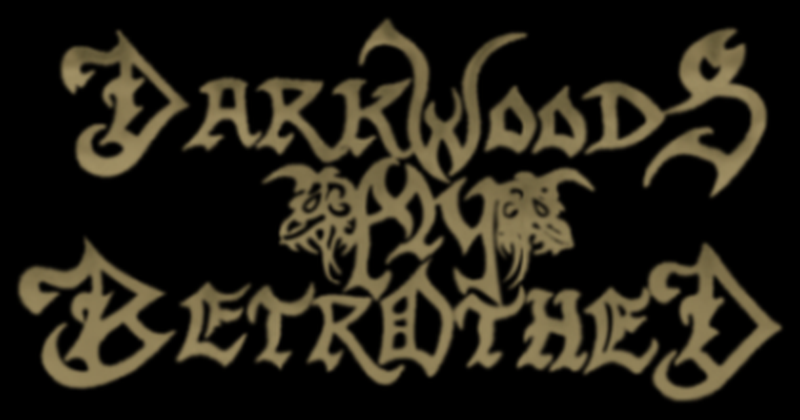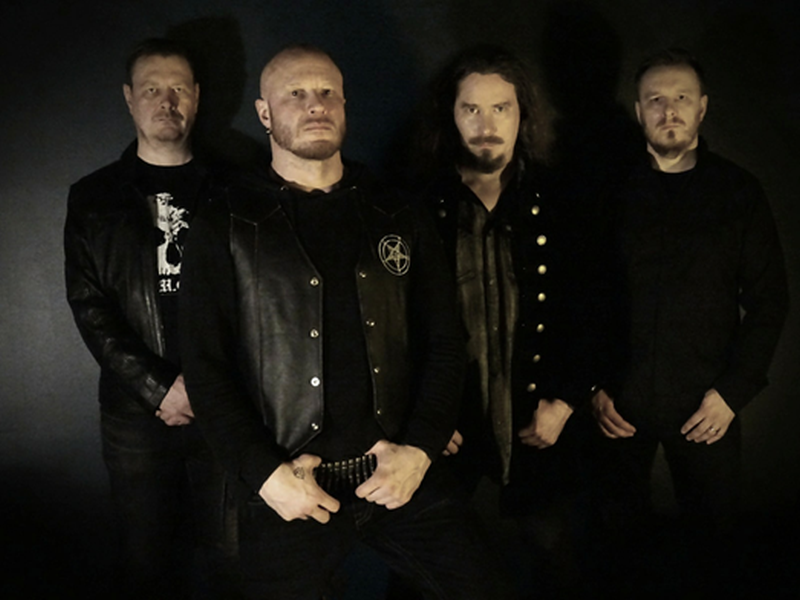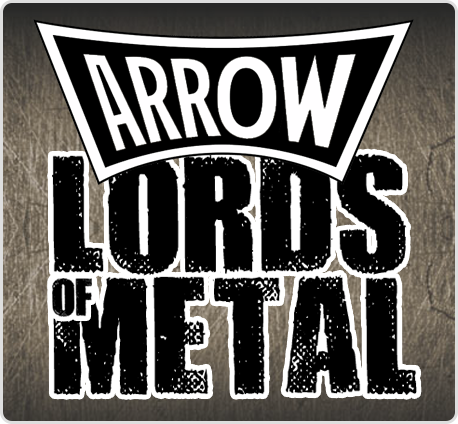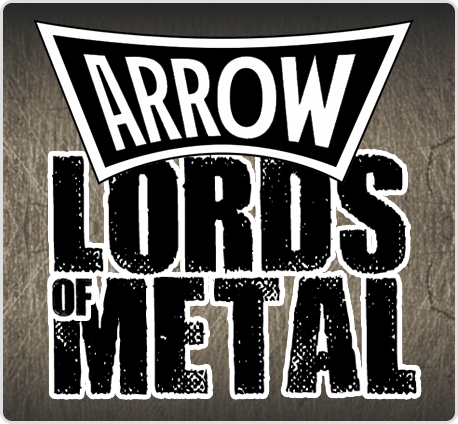
Jouni Mikkonen: “Initially this was supposed to be our grand finale, but making the new album has been so inspiring and we have enjoyed so much working with each other, so that we think Darkwoods My Betrothed´s saga will continue…”
Schijnbaar uit het niets en als een donderslag bij heldere hemel was er dit jaar plots het nieuws over de reünie en een nieuw album van het Finse Darkwoods My Betrothed en dit maar liefst 23 jaar nadat ze hun laatste album uitgebracht hadden. Natuurlijk is ‘Angel Of Carnage Unleashed’ niet zomaar uit de lucht komen vallen en daarom waren we erg nieuwsgierig om eens te rade te gaan bij één van de oprichters van de symfonische black metal band uit het land van de duizend meren. Wij krijgen heel wat opheldering van gitarist Jouni Mikkonen, zowel vroeger als nu één van de drijvende krachten achter de band.
Vera Matthijssens Ι 3 december 2021
What was the spark that ignited the fire again to reunite Darkwoods My Betrothed after such a long time and make a new album? How did you grow into that?
We had been talking about the new album for 10-15 years, but nothing just ever actually happened. We were busy with our works, families or time wasn’t just right. Then came Covid-19 and suddenly Tuomas´ calendar was basically empty and we realised that if we won’t do it now, maybe we’ll never have better chance to do it. When it was also a pretty good timing for me, Teemu and Pasi, Tuomas and I talked about this in July 2020 and he proposed the first schedule for recordings. In the end of August 2020 we made the final decision “Let’s fucking do it now!!!” and to reunite the band.
The previous album was 23 years ago and the band split in 1998. Did the core members remained active in the music scene (we know the story of Tuomas of course, but the rest of the band?) or did you do something completely different during the last two decades? Did you keep in contact with each other?
Actually we never broke up or split the band, we just weren’t active. As we are mainly “a studio band” there are also lots of non-active periods. We played some gigs at 2004 and 2005, but Pasi and I were the only original members of the band and Pasi played bass and Spellgoth (Horna) took care of vocals. Pasi has been pretty active in the scene as he used to play drums in Barathrum for some time and now he also plays bass in a black/thrash metal band called Hellboozer Union. I and Teemu have been mainly concentrated in listening to music (excl. 2004-2005 gigs), but I composed some new riffs and songs during the years. Teemu activated with his Welkins Boreal band in 2018. Otherwise these last two decades have been filled mainly with work, family and other interests and responsibilities. We didn’t keep contact that much in 2000-2012, but after that we started to see each other a bit more often and sent messages. But during these years DMB always somehow became a topic of conversation.
It is amazing that (almost) the same members all agreed on this reunion. What can you tell about the writing process of the new songs?
We felt that it would be just right to make the reunion with original line up. And to be honest we first talked about this to be the last DMB album and that we would “finish the band with honour” and then lay it in the grave with members who also created the band. But making the new album has been so inspiring and we have enjoyed so much working with each other, so we think DMB´s saga will continue… About the writing process: Schedule was pretty tight as we had only four months to compose songs, write lyrics, make arrangements etc. and we weren’t even able to rehearse the songs together. I had composed some material between 1998 and 2020, but Teemu and Pasi didn’t have any, so they started almost from zero. But it took only a couple of days and Teemu had written two great epic songs. I think he had so much “bottled-up” material inside that he just had to let it flow out. Pasi was also pretty productive with composing new songs. We made demo versions of the songs separately in our homes with assistance of garage band EZ drummer and other simple home studio equipment. Kai had only couple of weeks time to rehearse drums before drum recordings, when we actually saw first time as a whole band since the nineties.
Tuomas Holopainen rejoined you as full member this time and he contributed ideas. Can you tell a bit more about his contributions?
Tuomas was really active to reunite the band. He put a lot of effort to this and this seems to be really important for him too. He is in DMB “just one of us” and he’s not leading everything, but looking a bit further and gives his opinions and views. I think he also enjoys that different role compared to Nightwish. He was also our co-producer. Composing and arranging songs is really easy with him, as well… he’s a professional and extremely talented and productive musician.
Did the lockdown turned into an advantage for you, because Tuomas (and drummer Kai) had more time due to the fact that Nightwish could not tour?
Yes it did. This could have been possible to make some other time, when Nightwish weren’t in the studio or on a tour or otherwise active, but still you don’t know how the other band members would have been committed to other things. Timing was now just perfect.
Since the nineties many things have changed, in terms of the way of recording. How did you manage to go smoothly through this transition from analogue to digital? In other words, what can you tell about the actual recording experience?
I think the biggest change for us was that we didn’t rehearse the songs together this time. Teemu was familiar with modern home studio programs, but for me and Pasi it was all new and we had to learn to use drum software and home studio programs, so we were able to record demo versions of our songs. It took some time, but next time it will be faster and easier. Actual recordings with Tero Kinnunen were mostly similar with nineties sessions, but with some different techniques.
Lyrically the album deals with The Great Northern War. (1700-1721). How do Finns look at this era nowadays and who is the historian in the band to write about this subject?
I believe the majority of Finnish people don’t know this history very well and definitely they don’t know how devastating and harsh times these were. It is actually a largely forgotten period in the Finnish history. Not many people remember, or at least know anything about it. But for the population, it was a bigger disaster than any other war before or after in terms of how great a proportion of the people perished. Throughout history, Finland has often been under severe pressure between East and West. The Great Northern War has shaped our perception of our eastern neighbour, but since those times much has happened and the relationship between our countries has developed a lot. You need to know history to understand the present. But we must not get too caught up in history, because we can no longer influence it, we must look to the future. And of course we have to learn the lessons. We also have to be proud of how far a largely agrarian and poor country of the 1940s has come in less than a hundred years – in fact, how far it came even in the first three decades after the end of WW II. The concepts for the lyrics were developed jointly by our bass player Teemu Kautonen and author-anthropologist Dr Steven Parham, and draw on the well-known Finnish historian Dr Teemu Keskisarja’s book ‘Murhanenkeli’ (verbatim: ‘Angel of Murder’) as the principal source. The book deals with the social history of the Great Northern War of 1700-1721 from the Finnish perspective. For the lyrics, social history means that we don’t write about the adventures of kings and war campaigns; instead we focus on how individual Finns – either at the frontline or on the home front – experienced the ravages of the era.

The song ‘In Thrall To Ironskull’s Heart’ deals with the battle of Napue in 1714. What happened during this – most likely – essential battle?
This is an epic story about the Battle of Napue in February 1714, in which the Swedish army suffered a catastrophic defeat against the Russians. The Swedish army consisted of many nationalities including Swedes, Finns, Germans, Estonians and Latvians, but Finns formed the clear majority. In fact, the Swedish commander General Armfelt referred to his army as the ‘Finnish force’. In addition to professional soldiers, Armfelt recruited peasants from local farms. These new recruits were poorly trained and equipped: most of them wielded spears or only sharpened poles. This scene is the source for the inspiration behind the album cover. The battle was fought in an open field around the village of Napue in Western Finland. The Finnish force was outnumbered 2:1 by the Russian army. After an initial successful assault, the Finnish force was surrounded by the Russians. Only few escaped or were taken captive: all others were massacred. For the sake of comparison, the bloodiest day for the Finnish army in World War II involved 816 casualties over a frontline that covered 1000 km; at the Battle of Napue, there were 2645 Finnish casualties in an area of four square kilometres. For Finns, it was the reddest day in our history.
In the second song ‘In Evil, Sickness And In Grief’ we hear female vocals. Who is it and can you tell a bit more about this female singer?
She is Tuomas´ wife Johanna Kurkela. She is absolutely my favourite Finnish female singer and we were really happy to get her voice to our songs. It makes a huge effect! So fragile voice, but still so powerful and ruthless. Just gives me cold chills… Johanna is a well known artist in Finland and she’s also a member of Auri and she sung also on Tuomas` solo album ‘Music Inspired by the Life and Times of Scrooge’. Beautiful, beautiful voice and person!
Are there other guests on the album?
Jan Holm helped Kai with transportation of drums to studio. Then he just ended to make narrations and to be the priest in the first song. Markku Kaustia is Teemu´s friend and colleague and also very talented with guitar, so he was asked to play guitar solos. Aki Koponen and Teemu form together Welkins Boreal band and he took care of backing vocals. Great guys, everyone of them!
In contrast with the harsh side of the band, there are also clean male vocals on the album and ‘Murktide And Midnight Sun’ happens to be a perfect example of this smoother side. Can you tell a bit more about this song which is one of my favourites?
Teemu wrote this song, so he would be better person to talk about this. But this was actually the first complete song for the album. This song focuses on nature being a soldier’s worst enemy. At the time of the Great Northern War (1700-1721), famine and exhaustion were common among the infantry ranks, and diseases abounded. The cold climate on the Finnish and Russian fronts also took its toll, as common soldiers often lacked proper clothing. It was normal for at least 10% of the army at any given time to be sick – not sick with a bit of a cough and runny nose, but sick to the point of being unconscious. The repetitive nature of the verse structure in this track emphasises the dreariness of Finnish seasons. Here, the Angel of Carnage is indeed a harsh mistress, unforgiving and unimpressed. In the lake lands of Finland, murder thrives in the seasons of winter’s murk as well the days of summer’s undeath.
Until now we have two lyric videos. Are there plans to make real music videos with the band featured?
Real music videos haven’t been planned yet, so we are not sure about them. Time will tell.
The artwork has an archaic, nice flavour. Who was in charge? Can you tell a bit more about its symbolism?
The cover art has been provided by Stefan Todorović a.k.a Khaos Diktator, who also happens to be Gorgoroth’s current vocalist. We had seen his works before and Tuomas Rytkönen, who is responsible for the layout of our album covers and shirts, also recommended him to us. Stefan did an amazing job! We could not be more pleased with the outcome.
I wonder why did you actually quit the scene after that third album? Why did you put the band to rest?
Like I said earlier, we never quit the band completely. After ‘Witch-Hunts’ we graduated, started working and moved to different parts of Finland, so everything else took our time and energy.
What are the plans for the near future and for playing gigs?
At the moment gigs seem to be impossible due to the fact that Tuomas and Kai are busy with Nightwish and Teemu moved abroad, so we should hire three new live musicians for the gigs and it wouldn’t be anymore Darkwoods My Betrothed, I think.
Is this a start of a new era for the band or will it be full circle with this ‘comeback album’? I hope you will continue…
Like I mentioned earlier, to be honest we first talked about this to be the last DMB album and that we would “finish the band with honour” and then lay it in the grave with members who also created the band. But making the new album has been so inspiring and we have enjoyed so much working with each other, so we think DMB´s saga will continue…
If there is something you want to add, please feel free to do it here…
Thank you Vera for the interesting interview! We hope that people will delve into the lyrics of the album in addition to our music. I will give a huge boost to the music! It’s great to be back in the scene again.




